- The John Malkovich EXCLUSIVE
- Marlborough Hits 50
- The Six BEST wine books
- Ventoux – Next Century Wines
- Ageing English Fizz: How, Why and What
- The Ten Wines Never to be Without
- The New Face of Languedoc
- Ukraine – Wine not War
- Our WINES OF THE YEAR (2023)
- A Southern French Feast
- ORANGE WINE Part 1
- ORANGE WINE Part 2
- Ancient Vines to the Rescue in St Mont
- Light Strike: Wine’s Not-So-Secret Scandal
- Grower Champagne with Lea & Sandeman
- Going Gaga for Garnacha
- SASSICAIA – The Insider’s Guide
- UK Wine’s Counterculture
- News & Views
- Rías Baixas – Mists, Myths, Mariscos
- Rías Baixas – Albariño with Attitude
- Red Wine Headaches: A Eureka Moment?
- Wine and War – Palestine, Israel and Lebanon
- We Need To Talk About Rosé
- Wines to Combat Climate Change
Summary
It’s called ‘The Grenaissance’.
This exhilarating revival of the grape variety known in Spain as Garnacha and France as Grenache, once the world’s fourth most widely planted wine grape, which has gone from workhorse to show pony in the blink of an eye.
The phenomonenon has been termed, ‘one of the most exciting developments in red wine today.’
How come? What’s changed? Who’s leading the charge and fuelling the new wave? And what’s this we hear about inherent suitability vis a vis climate change?!
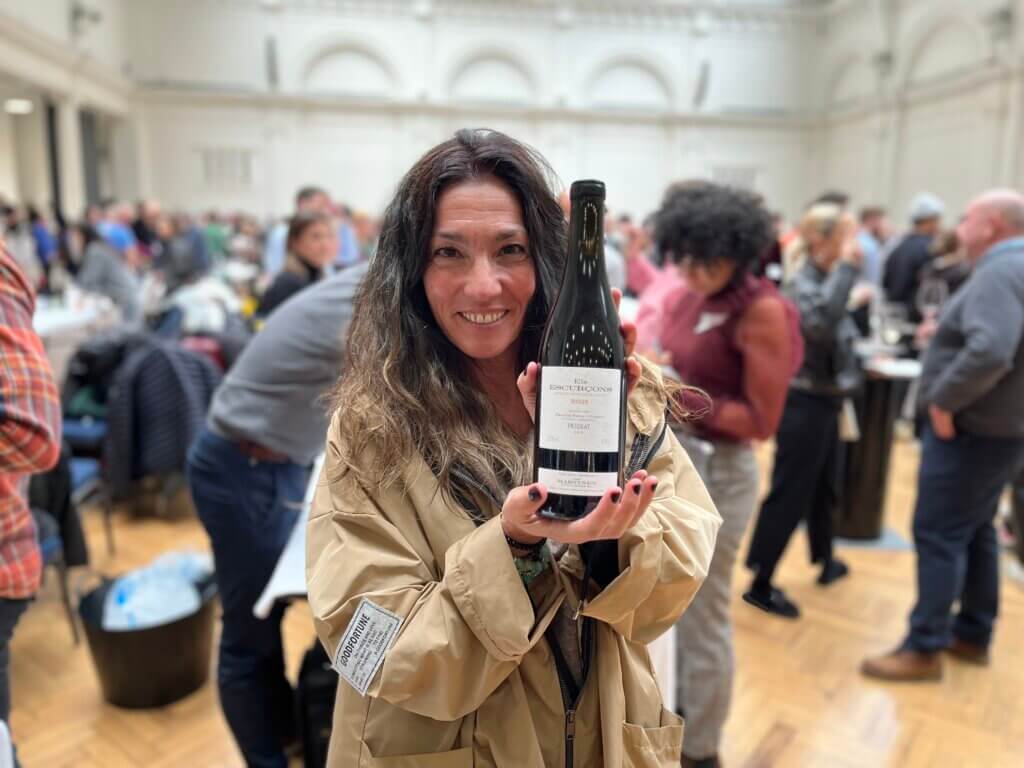
We ask all these questions and more, focusing on the epicentre of Grenache renaissance: Spain.
We hear from leading Spanish wine lights Sara Perez, Fernando Mora, Alvaro Palacios and Norrel Robertson, among others.
A fair few delicious recommendations litter the chat, during which we also dwell on love, diamonds, mastication, stems, Samurai – and the will of the cosmos.
Starring
- Sara Perez, Mas Martinet
- Fernando Mora MW, Bodegas Frontonio
- Alvaro Palacios
- Alvaro Ribalta MW, Massal Selection
- Norrel Robertson MW, El Escocés Volante
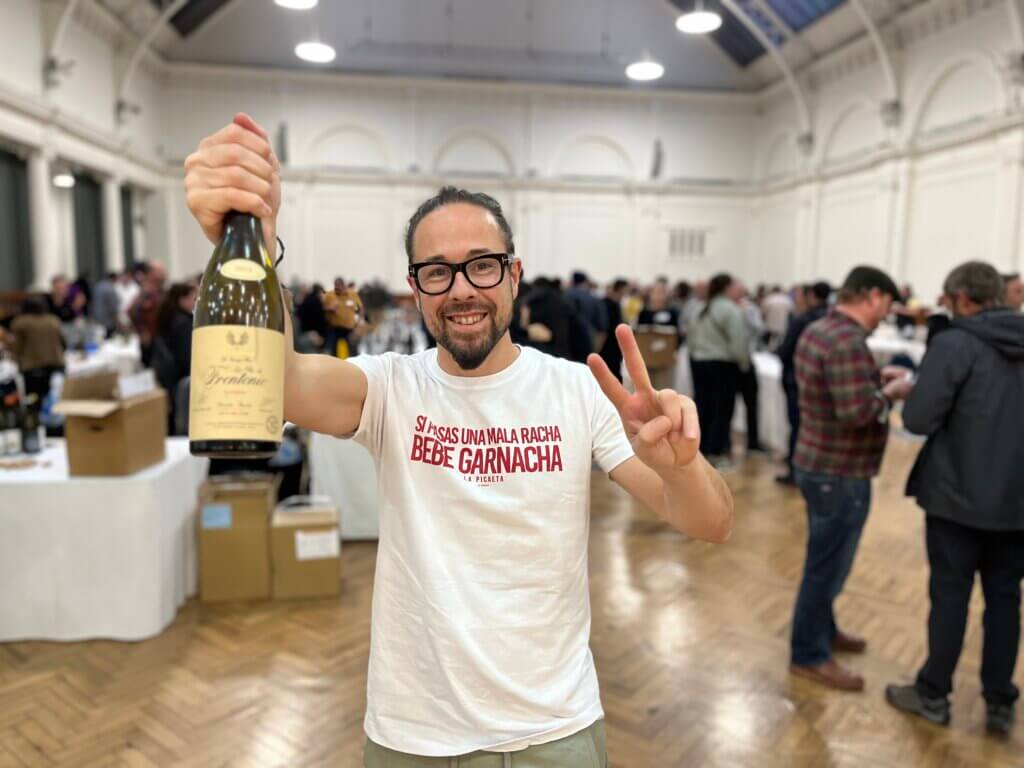


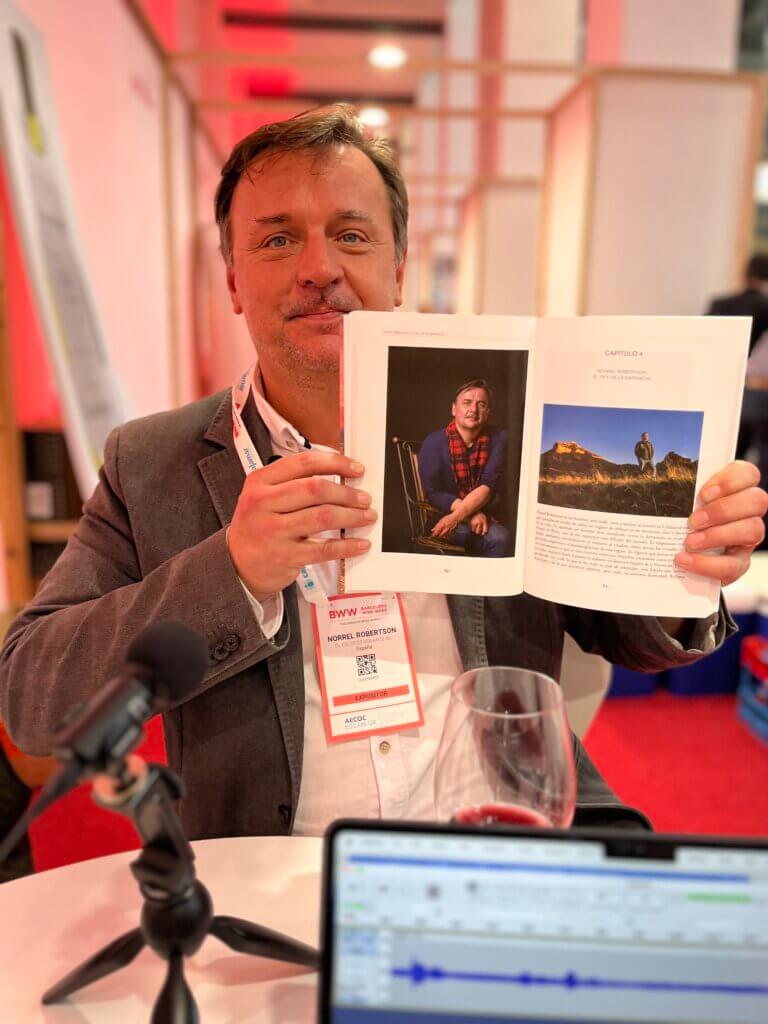
Links
- In this episode we reference a publication by Kym Anderson and Signe Nelgen with stats on Grenache plantings around the world. It’s a fascinating work and well worth a browse if you’re into wine geekery like us. The latest edition is 2020 and you can download a free copy of the PDF here: Which Winegrape Varieties Are Grown Where?
- You can find our podcast on all major audio players: Apple Podcasts, Spotify, Google, Amazon and beyond. If you’re on a mobile, the button below will redirect you automatically to this episode on an audio platform on your device. (If you’re on a PC or desktop, it will just return you to this page – in which case, get your phone out! Or find one of the above platforms on your browser.)
Wines
The following are Garnacha wines we’ve tasted lately, and which we reference in the podcast. Plus a couple of extra bonus tips.
Selected UK stockists are included. Prices can vary so do check beforehand, and maybe try shopping around a bit (Wine Searcher isn’t a bad place to start).
These aren’t always the easiest wines to find. Here’s hoping that changes soon as Garnacha gains more and more momentum!
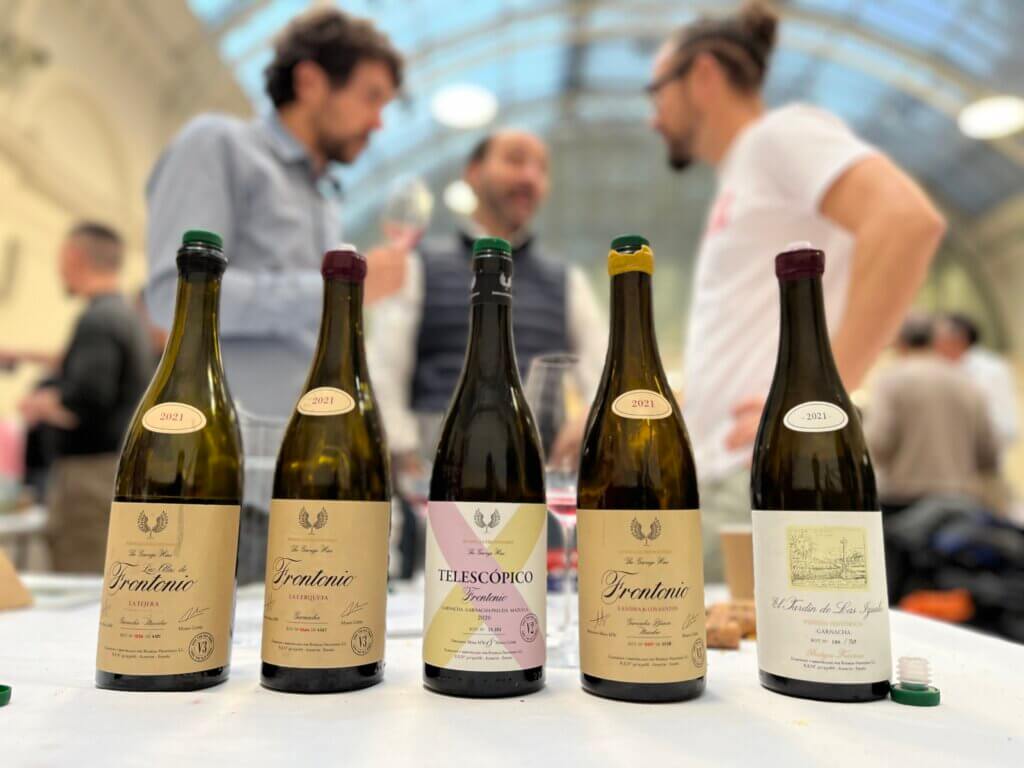
Spain
- Mas Martinet Els Escurçons 2021, Priorat (£80, Justerini & Brooks)
- Venus La Universal 2018 Garnacha, Montsant (£38, Justerini & Brooks)
- Alvaro Palacios Finca la Montesa Monte Yerga 2021, Rioja (£18.95, Berry Bros & Rudd)
- Alvaro Palacios Alfaro Quiñón de Valmira Viñedo Singular Sierra de Yerga 2021, Rioja (c £240, BBR)
- Bodegas Frontonio La Cerqueta 2020, Valdejalón (c £43, Lay & Wheeler)
- Bodegas Frontonio Telescópico Garnacha 2020, Valdejalón (£20, Lay & Wheeler)
- Bodegas Frontonio Las Alas de Frontonio Tinto La Tejera 2021, Valdejalón (£56, Lay & Wheeler)
- Bodegas Frontonio El Jardin de las Iguales Tinto 2021, Valdejalón (£186, Lay & Wheeler)
- Vitícola Mentridana El Mentridano 2022, Méntrida (£16, Gourmet Hunters)
- Vitícola Mentridana Cantos del Diablo 2021, Méntrida (£95, Sourcing Table)
- Ca di Mat Fuente de los Huertos 2022, Sierra de Gredos (£27, Vinissimus)
- Ca di Mat Los Peros 2021, Sierra de Gredos (c £29, Carte Blanche)
- 4 Monos CIen Lanzas 2020, Sierra de Gredos (£22, Justerini & Brooks)
- 4 Monos Aguja del Fraile 2020, Sierra de Gredos (£25, Justerini & Brooks)
- Daniel Ramos Kapi Amphora 2019, Cebreros (£22, Stroud Wine)
- Las Pedreras Los Arroyelos 2022, Cebreros (£25, Drinkmonger)
- Las Pedreras Burbujas de Arquitón 2022, Cebreros (c £22, Graft Wine)
- Uvas Felices La Reina de los Deseos 2020, Madrid (£85, Decantalo)
- *Herència Altés Trementinaire 2021, Terra Alta (c £20, Bancroft)
- El Escocés Volante El Cismático 2020, Aragón (£38, Gourmet Hunters)
- El Escocés Volante Valdelabarga 2021, Aragón (c £26, Bibendum)
- Aseginolaza y Leunda Las Santas 2020, Navarra (£24, Decantalo)
- Terroir Sense Fronteres Negre 2021, Montsant (£18, Gourmet Hunters)
*NB: orange wine!
Australia (& US)
- Ministry of Clouds Kintsugi Grenache 2018, McLaren Vale (c £69)
- Alkina Polygon No. 5 Grenache 2020, Barossa (c £185)
- Alkina Kin Grenache 2022, Barossa (£25)
- Thistledown This Charming Man Grenache 2021, McLaren Vale (£48, Hedley Wright)
- An Approach to Relaxation, Sucette Grenache 2019, Barossa (£58)
- Willunga 100 Smart Vineyard Clarendon Grenache 2021, McLaren Vale (£30, Must & Lees)
- The Language of Yes Grenache 2020, Santa Maria, California (c £40, Wine Republic)
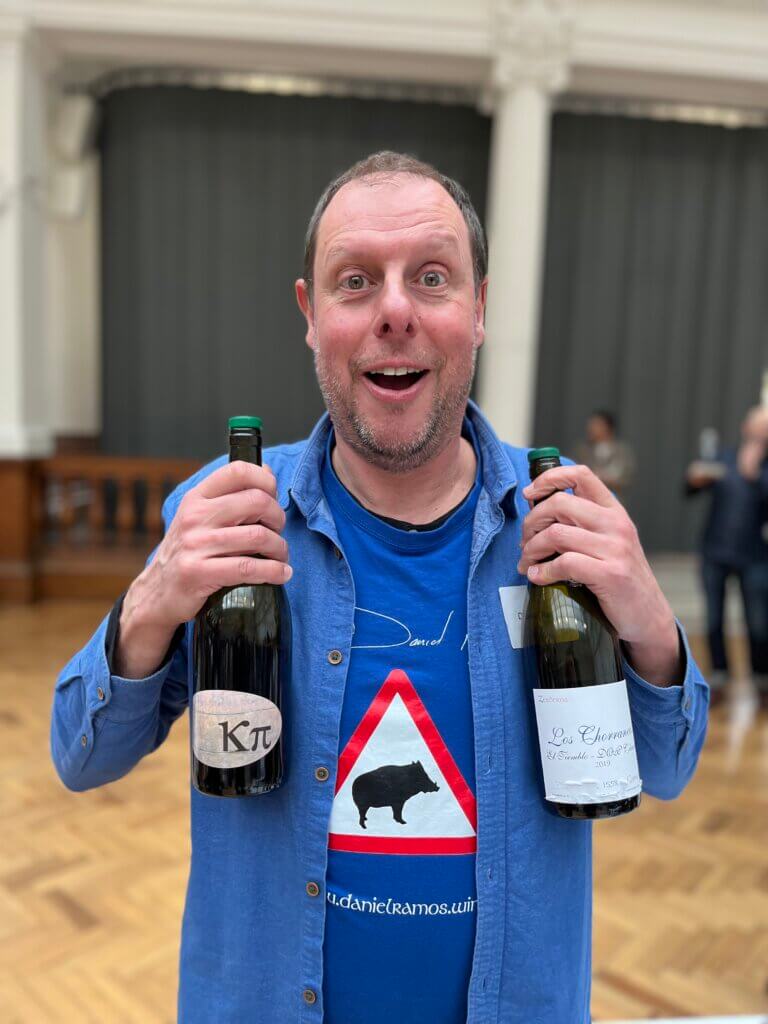
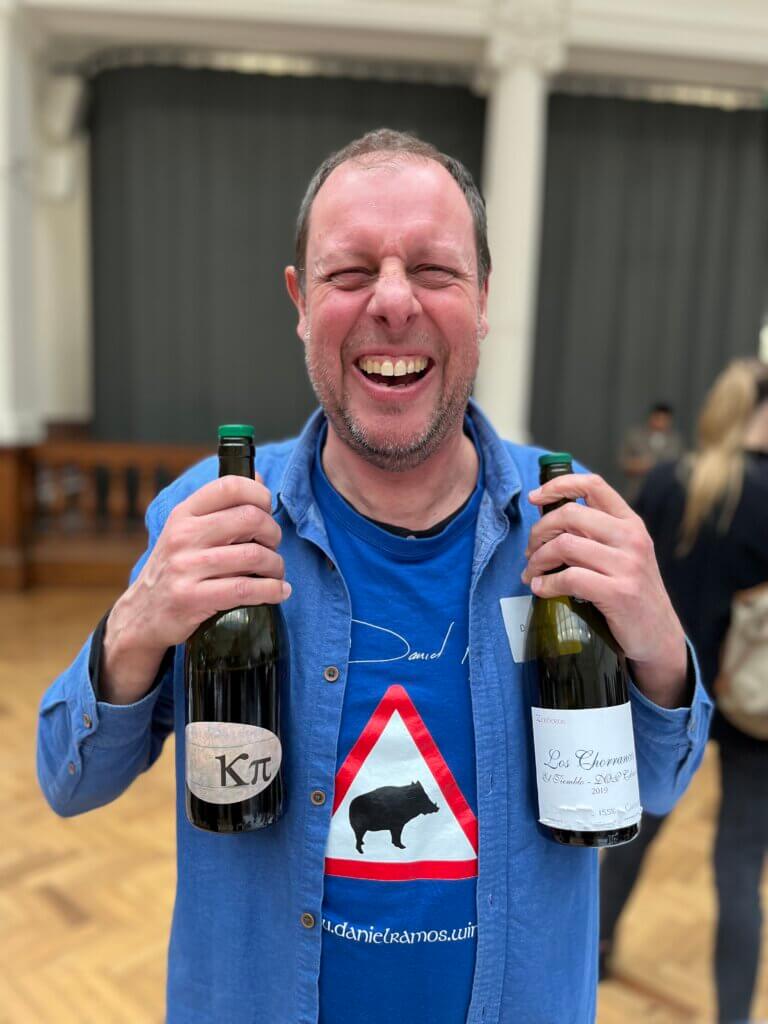
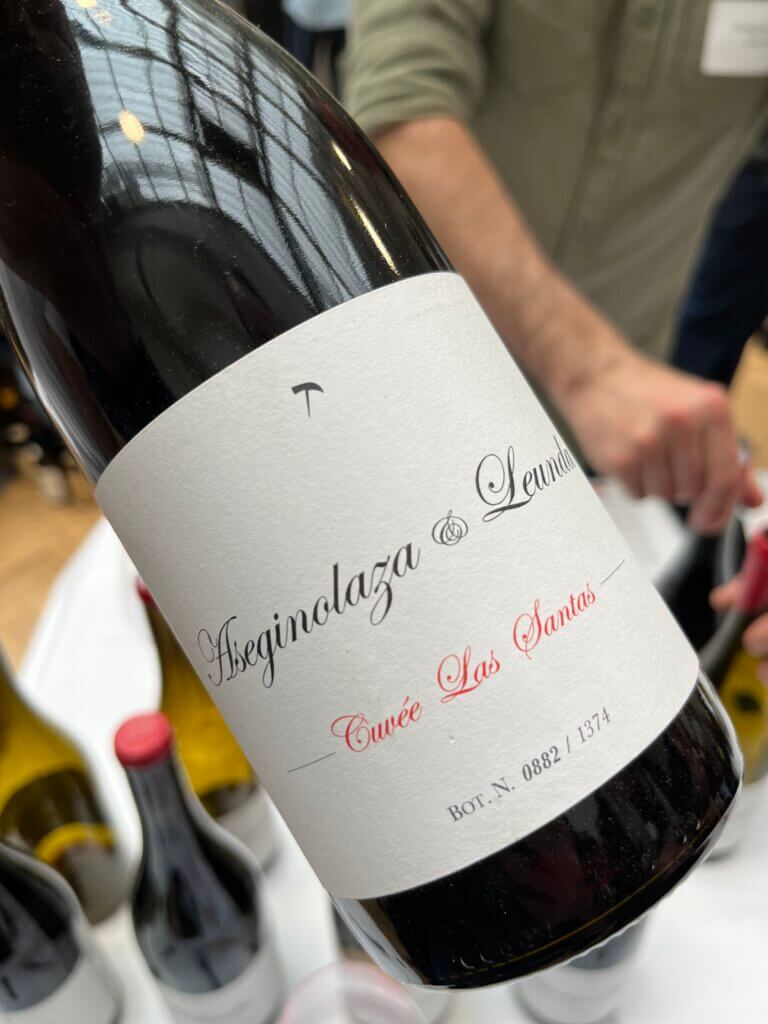
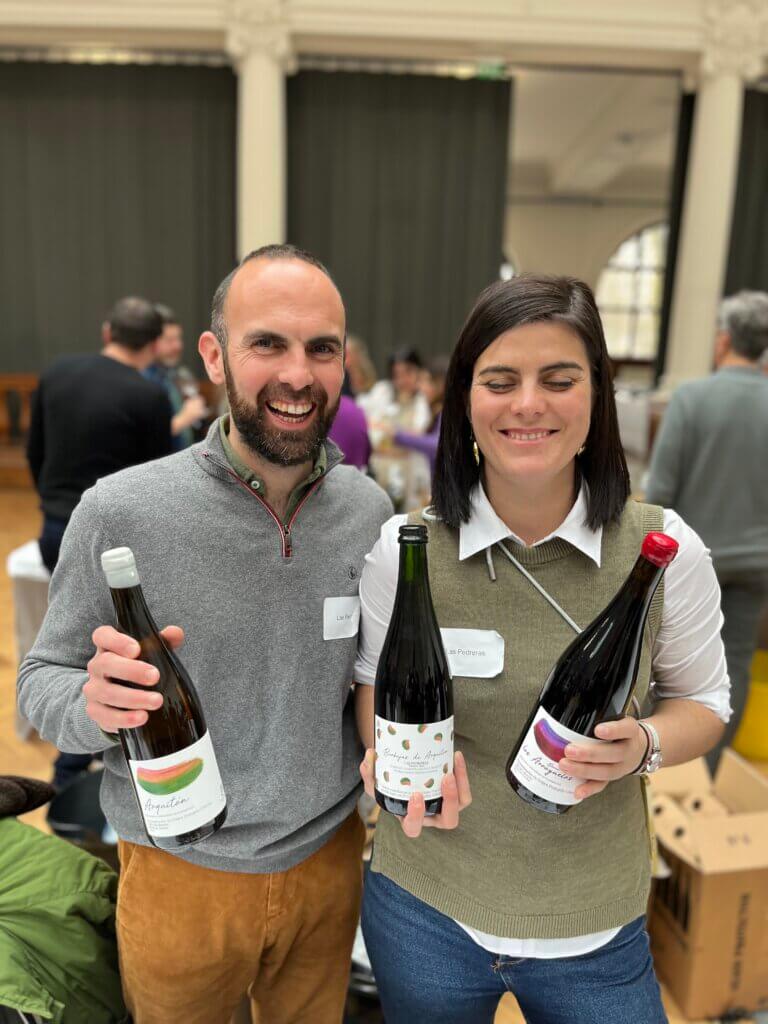
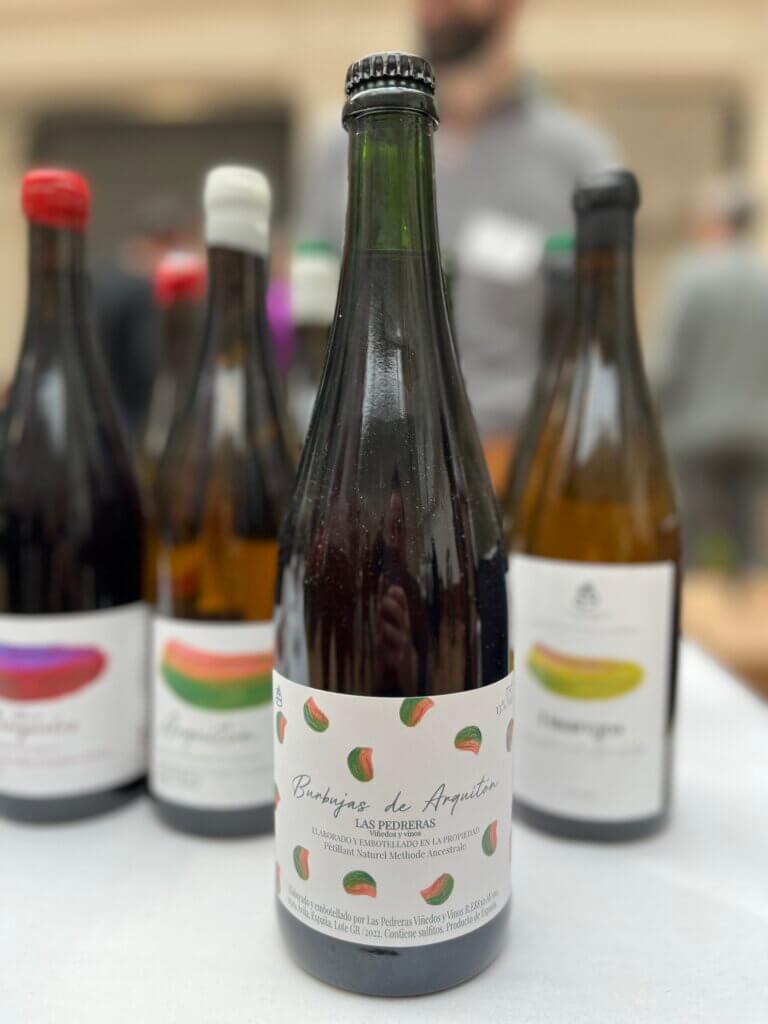
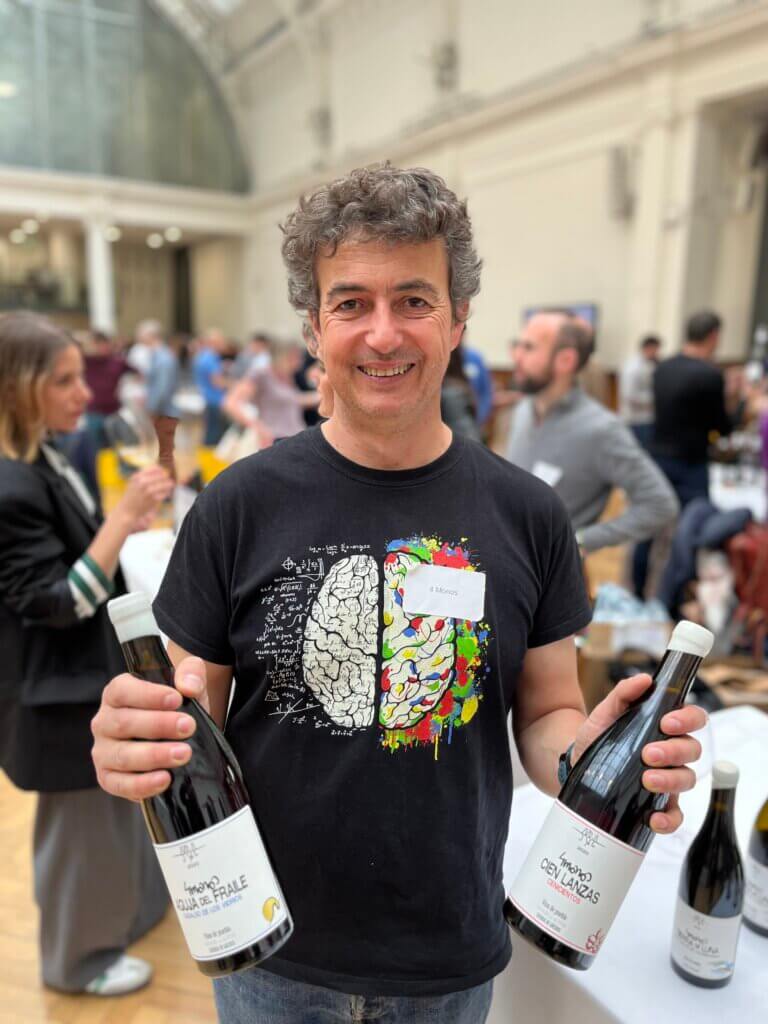
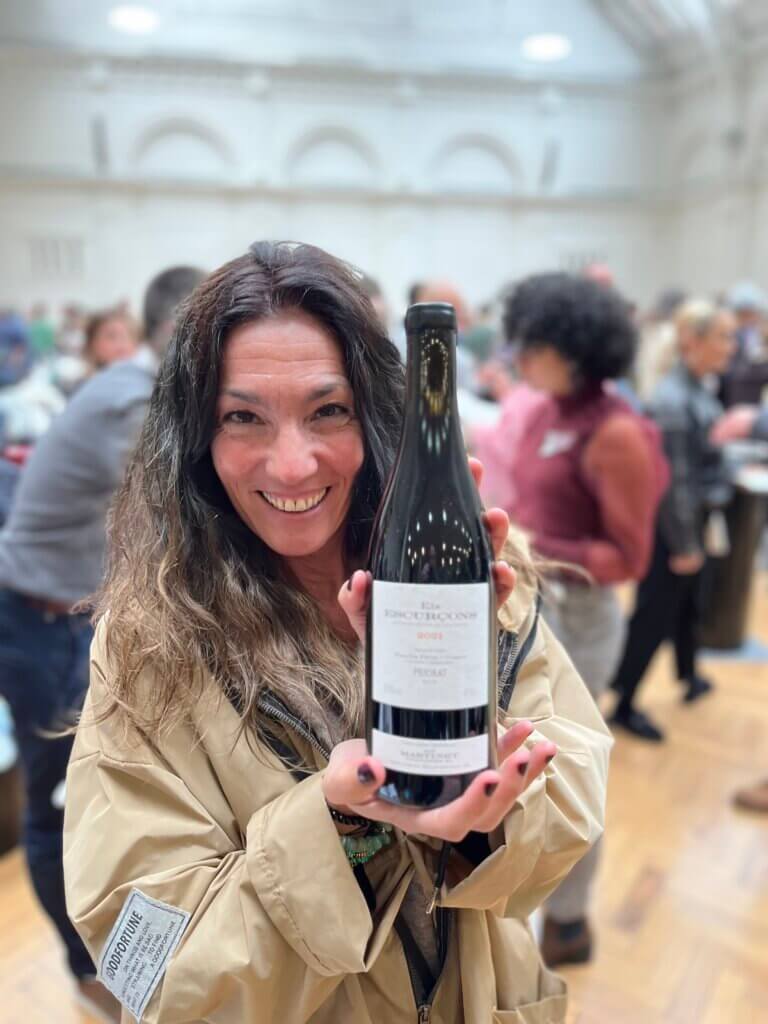
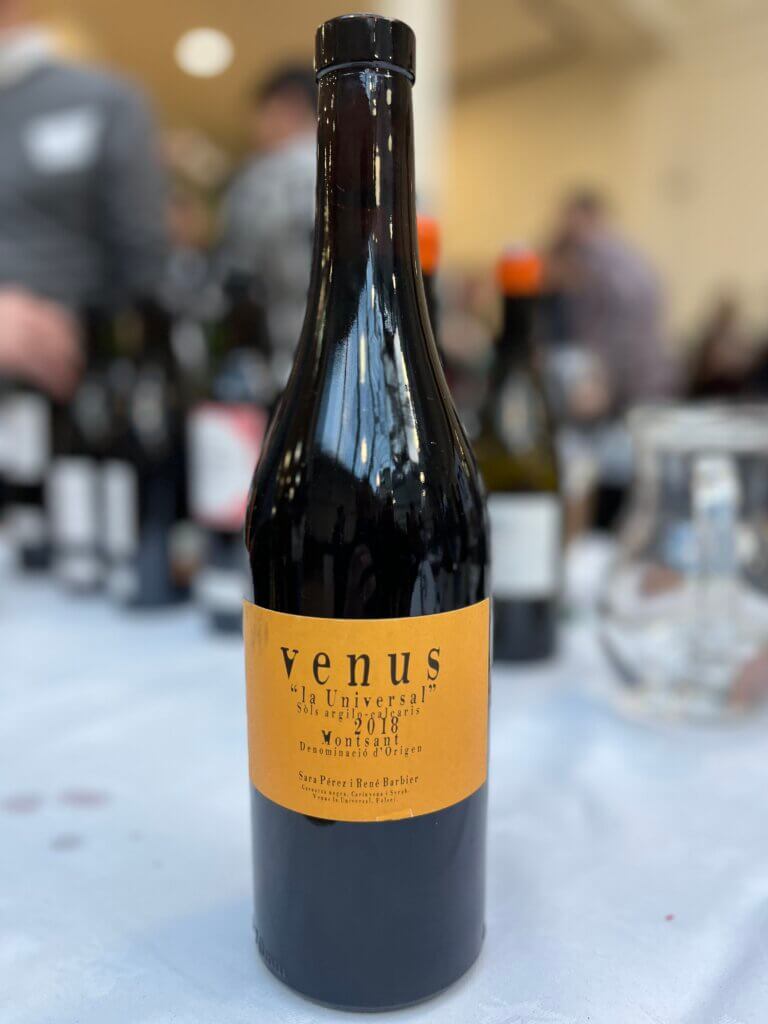
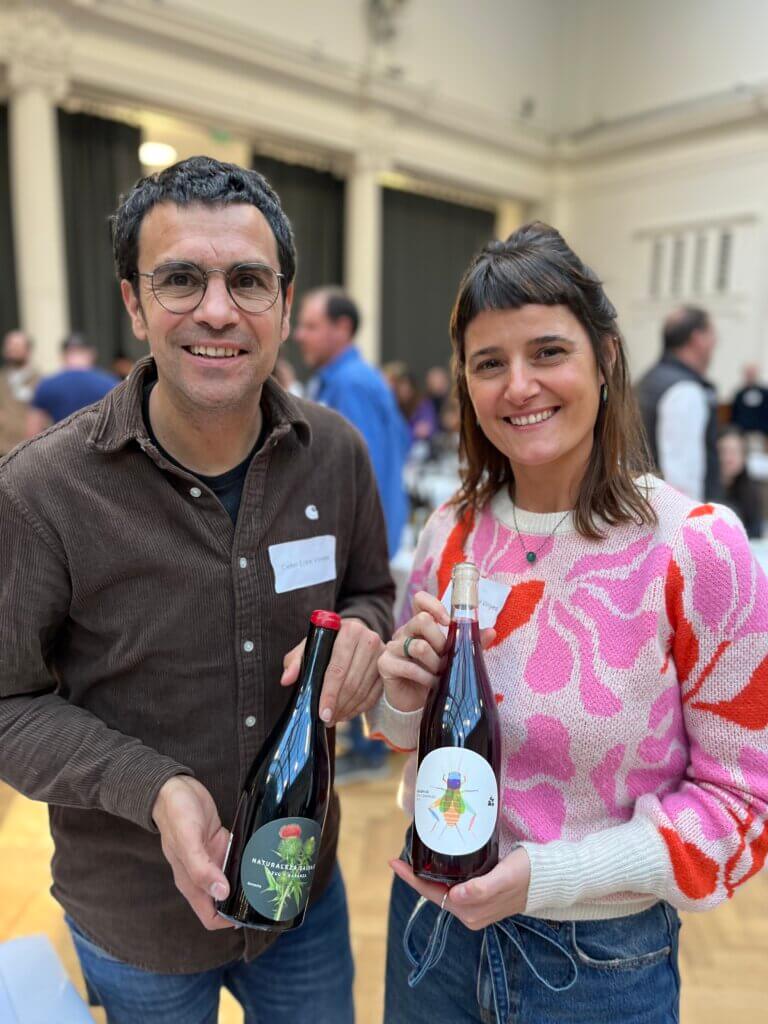
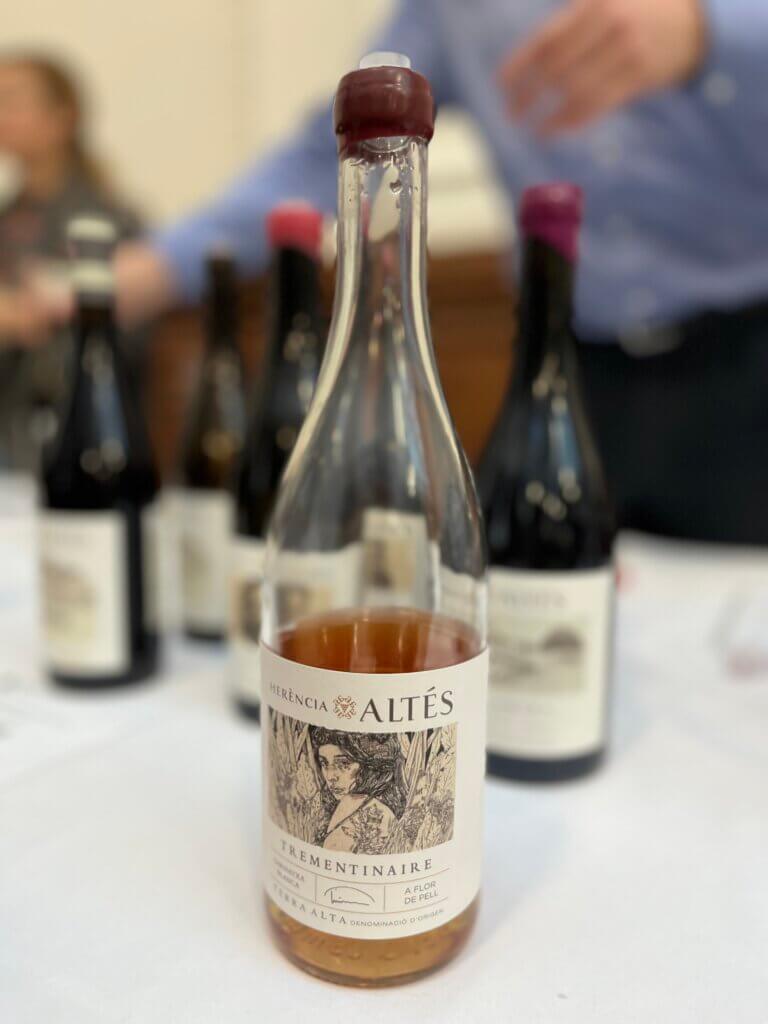

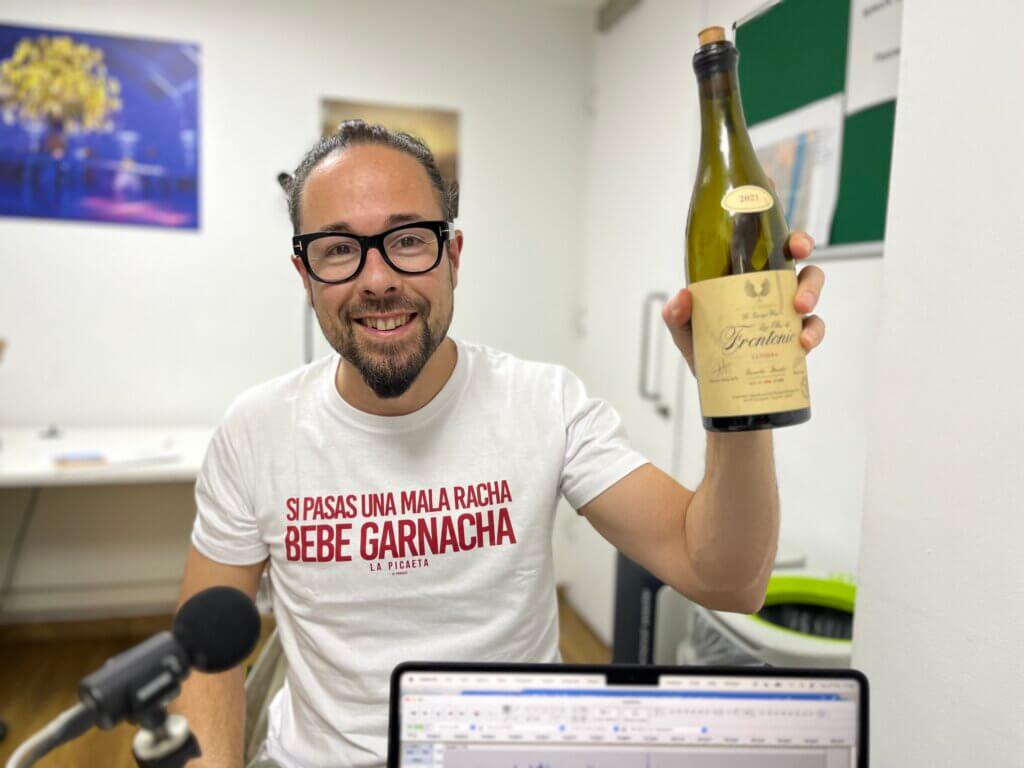
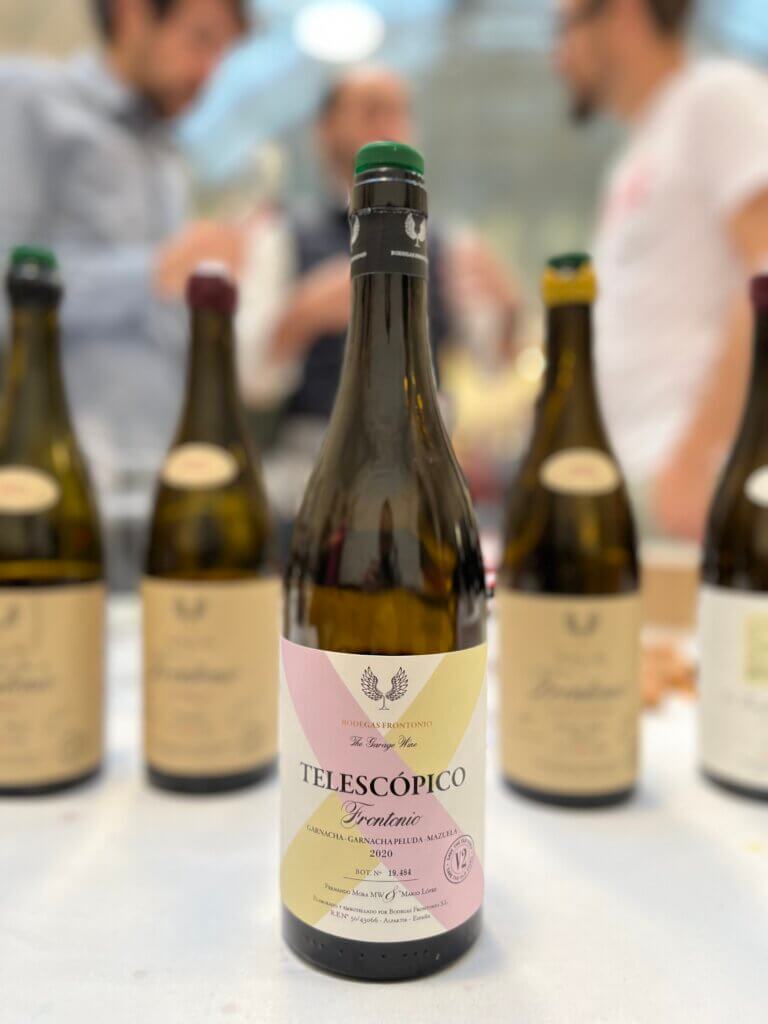
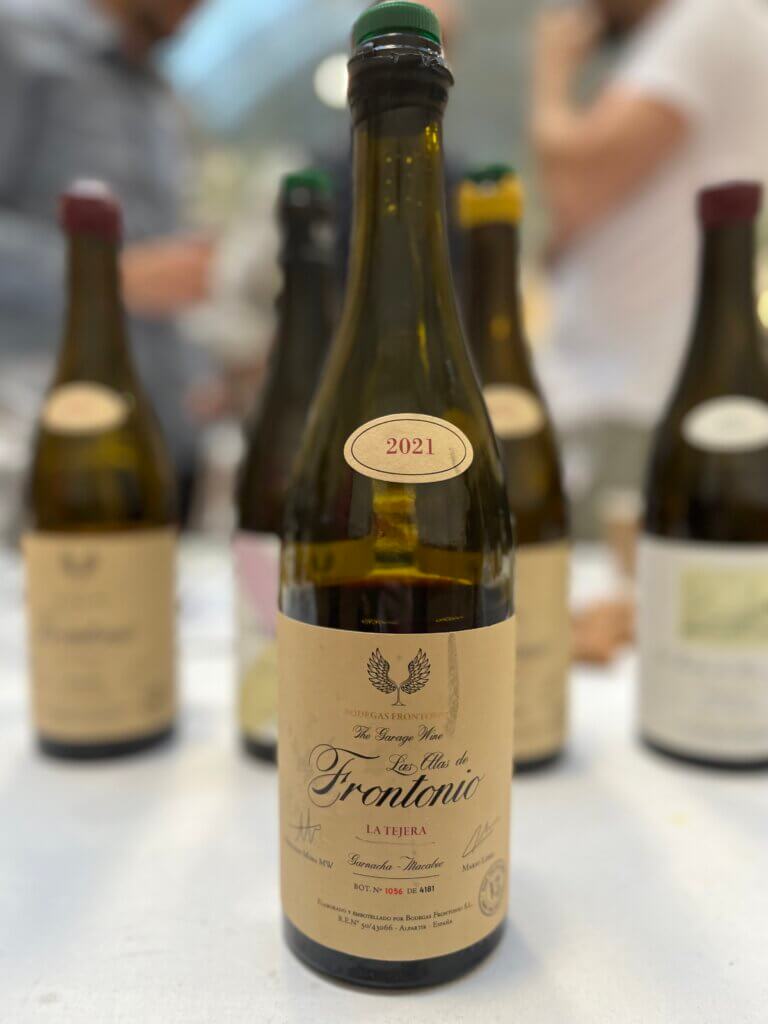
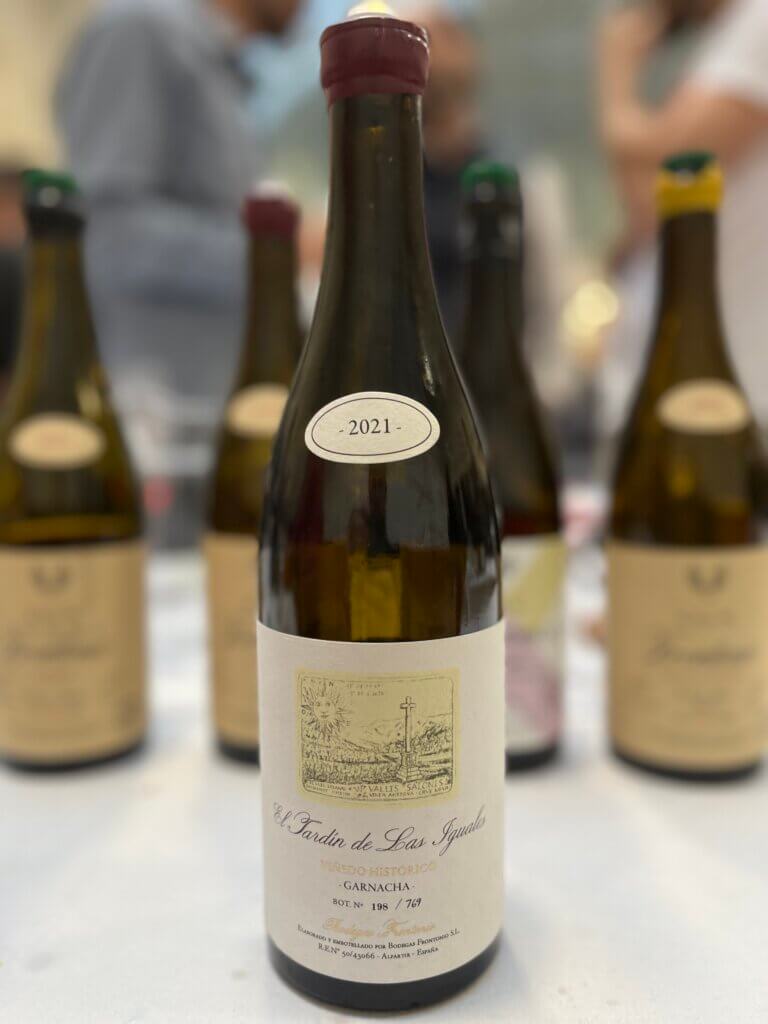
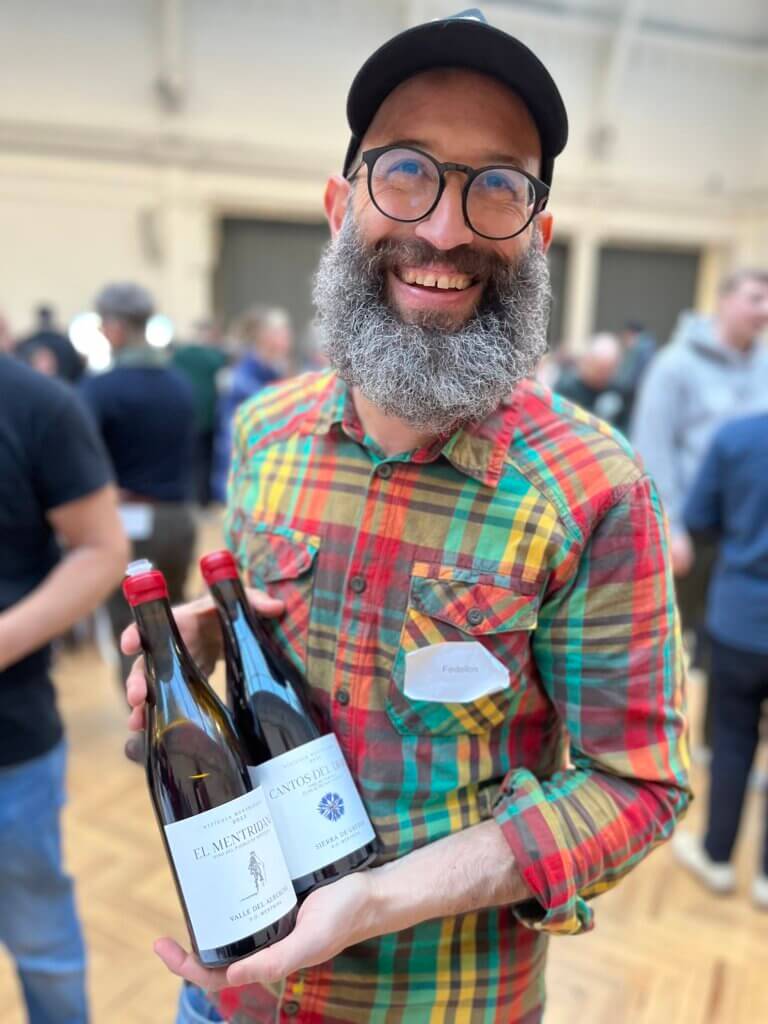
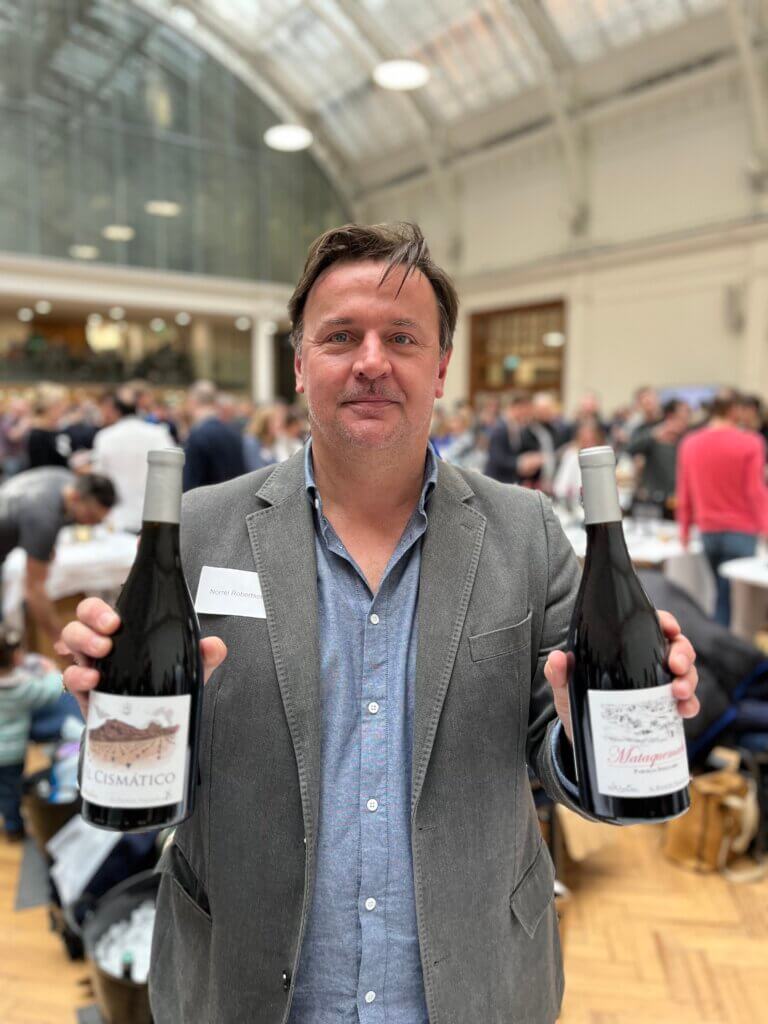
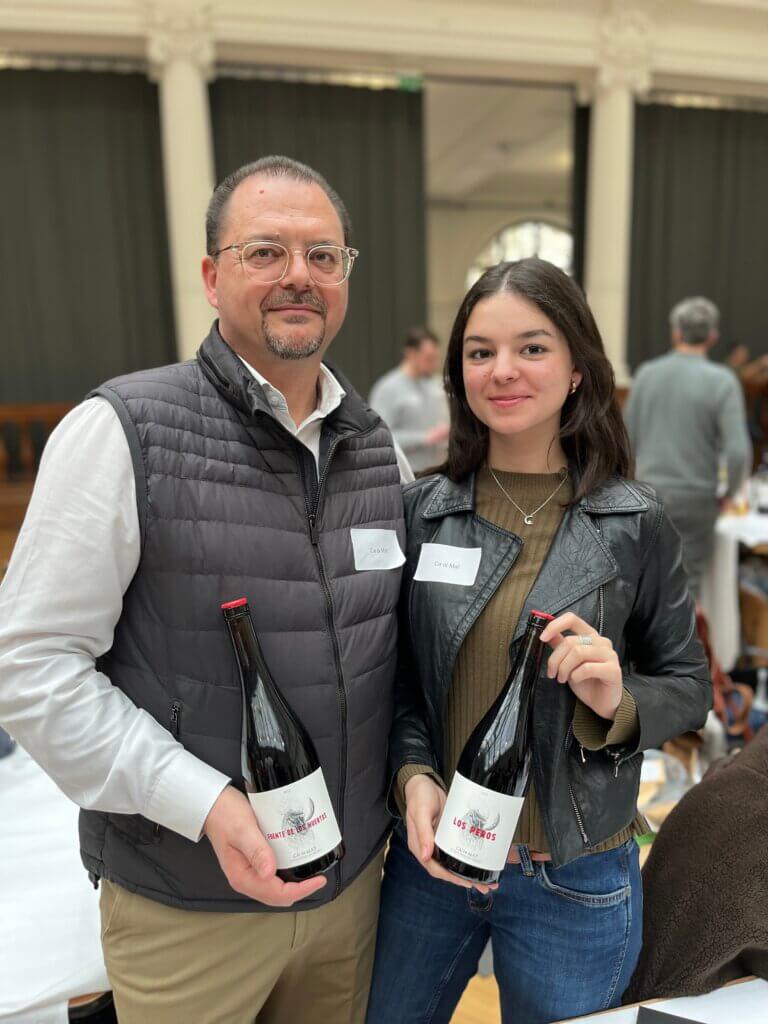
Get in Touch!
We love to hear from you.
You can send us an email. Or find us on social media (links on the footer below).
Or, better still, leave us a voice message via the magic of SpeakPipe:
Transcript
NB: This transcript was AI generated. It’s not perfect.
Susie: Hello, and welcome to Wine Blast I’m Susie. He’s Peter. You know how it goes. So let’s just skip straight to the good stuff, shall we?
Because in this episode, we are going gaga for Garnacha
Because in this episode, we are going gaga for Garnacha Or is it Grenache?
Peter: Getting into the controversy. Politics, right from the off. Love that. Love that. I say we call, know, whatever the hell we want to call it.
Susie: within reason.
Peter: As long as it’s not Keith. I’d say that’s within reason, because Keith is Keith is not Garnacha. Anyway, Garnacha, as it’s known in spanish speaking countries, or Grenache in French, is very much the hero of our story today, whatever its name. It’s a, red grape variety that in many parts of the world was written off as kind of a rustic, workhorse variety, but which is now taking the wine world by storm as it kind of shakes off its shabby country garb and dazzles us all with its elegance and refinement and also resilience, in the face of climate change.
Susie: Yep. I mean, there is an element of zero to hero in this story, which I know will be keeping you, Mr. Richards, very happy.
Peter: I do love a hero story.
Susie: We know. Now, this transformation has been dubbed the. Grenaissance See what they’ve done there.
Peter: Nice.
Susie: And it’s been described as, and I quote, one of the most exciting developments in red wine today. Now, we have to confess a personal journey here, too, because. Whisper it. For a long time, we weren’t really the biggest fans of Grenache.
Peter: Heresy. Heresy. I know, but it’s the truth. It is the truth. and we have our reasons, but that’s also part of the story, too, which we’ll be telling. So, anyway, let’s hear a taster of what’s coming up.
Sara Perez: The Grenache can be also very complex. Fine. And. Oh, my God. Super mystery. M so this is the most beautiful thing. Now I’m just in love.
Alvaro Palacios: Garnacha is the music, is the poetry, is the intellectuality.
Fernando Mora: I call myself Garnacha Samurai. Garnacha is like a diamond with Many faces like, a terroir translator. It’s a grape. That really shows the place where it comes from.
Susie: Spanish winemaking greats Alvaro Palacios, Sara Perez, and Fernando Mora there, all of whom we’ll be hearing more from in due course, in addition to a few other key voices in the Garnachista movement in Spain, which is so exciting right now.
Peter: Yes, we are going to unashamedly focus on Spain in this episode, primarily because it is one of, if not the key epicenters in this fascinating and delicious Garnacha revival. but also because it’s what we were asked to do, and we do what we’re asked to do.
Susie: We do indeed.
Peter: Or told. In my case, we were asked by Garnacha man. That is his Instagram handle. Ilya Kirilin
Susie: Yep. Listener Ilya kindly wrote in from Madrid to say the following. Thank you for the podcast. It’s definitely the kind of wine content we all need, full of knowledge, but without any snobbery. Now, I’ve been listening for quite some time and haven’t heard much about spanish wines, especially about Grenache slash garnache, of which I’m a huge fan. We are seeing a truly massive move in Spain and Garnacha Every region is trying to find its own identity with very diverse terroirs. So why don’t you make an episode about this new wave Garnacha movement that actually explains a lot of what is happening in Spain.
Peter: A very, very good question. thank you, Ilya. and can I just take a moment to say thank you for all the brilliant questions that have been coming in of late. We really appreciate you getting in touch. so many fascinating topics. and this question is a particularly good one because it kind of sent us off on an adventure, didn’t it?
Susie: Well, it sort of became clear that diving into Grenache was just meant to be. We had this question, and spending a bit of time looking at Spain was overdue, it has to be said. But then I co hosted a fascinating seminar on old vine Grenache from around the world, which included amazing wines from Australia, France, the US, and Spain. It was. And that kind of got the imagination firing, didn’t it? And then you did a whole bunch of stuff on this, too, didn’t you?
Peter: Exactly. Yeah, I gave a masterclass in Barcelona that touched on Garnacha. I also went to a fascinating couple of tastings, one with Alvaro Palacios, who makes L’Ermita I’m sure you’ll know, one of Spain’s most expensive wines, among other things. and then another tasting called vina teros, which was just the most sensational gathering of spanish winemakers and wines in London. and Ganacha was the absolute star of that particular show.
Susie: Anyway, so all of this, we realized, didn’t we, was the cosmos sending us a sign. A giant, flashing neon sign, even we wine nerds with our heads permanently in the bottom of a glass, couldn’t miss. It is time to talk. Gone at you.
Peter: So there we go. yet more proof that this podcast channels the will of the cosmos directly into your ears. as if you ever doubted.
There is an ongoing debate about where the Garnacha grape variety originates
but we need to start at the beginning. set the scene a bit. So, you’ve very cleverly given us our starting point there, because we need to pick up on this whole business of the name of this grape variety. It’s important. Let’s clear it up.
Susie: It is indeed. It is indeed. So, it’s known as Grenache in France, which is a nice name because it flows and sounds soft and mellifluous Plus, it’s only two syllables, so it’s obviously easier to say than Garnacha which you have to chew a bit more, don’t you, before you spit it out?
Peter: Yeah, they love a bit of sort of linguistic mastication, don’t they, in Spain and South America? it almost has a sort of bit more energy and urgency to. It doesn’t. Almost a sort of earnestness. Garnacha sounds very sort of. But, actually, you know, neither of these is entirely accurate, of course, because we should be defining it as garnacha tinta, or granache noir, because there are different kinds of ganacha. There’s red Garnacha white Garnacha gray Garnacha There’s even hairy Garnacha which sounds much better in Spanish at, peluda Garnacha Peluda But it’s still a bit od, isn’t it?
Susie: Yeah, but don’t be alarmed because you don’t get hairs in your wine. The thought of that is just horrible. the hairy bit is because the underside of its leaf is downy or furry.
Peter: Yeah, furry. Furry definitely sounds better, doesn’t it? Slightly acuteer and a bit more cuddly.
Susie: But no, you’re right. This is a diverse family of grapes, of which Garnacha tinta is the main one. And diversity in wine grapes usually means it’s an old variety, which it is, and it’s undergone several mutations. And actually, this diversity is also being used to settle an old argument about where its origins lie, which is the subject of quite a lot of controversy.
Peter: Aren’t there sort of quite heated exchanges between Spain and Italy over this?
Susie: Yeah. So Spain has long been thought to be the cradle of gonatcha, with the region of Aragon in northeast Spain looking like the most likely spot. And we’ll come back to Aragon later, actually. But garnacha is also grown in Italy. It’s known as Cannonau in Sardinia, for example. And italian researchers have said, hang know, Sardinia’s got a lot of this stuff and it’s mentioned in these very historical documents, so we think it’s ours.
Peter: And what do the Spanish say?
Susie: They chewed it over for a bit. Say no more. But no, I mean, both these theories are plausible. It’s probably impossible to say definitively, which is true. But in the Bible, that is wine grapes, it does say that Spain is the more likely origin point. And that’s from a genetic perspective, because in Spain, you find all three colour variants of Garnacha as well as mutations like the furry version. And there’s also significant clonal diversity there, which you don’t get to the same extent in Sardinia. And usually the longer a grape variety has been in a place, the more likely it is to mutate.
Peter: Okay, so, ah, another reason to call it Garnacha then, if we’re being historically accurate, I suppose.
Susie: I think so.
Peter: what about how it is in the vineyard, how it grows?
Susie: Well, it’s a bit like me, it loves the sun, it’s a bit like me, it’s a late ripener. So it needs a warm climate and.
Peter: You need a warm climate.
Susie: It’s also fairly hardy and resilient.
Peter: And you being a fine Yorkshire stock, hardiness runs through your veins. But equally, it’s not like you, in that it’s not particularly thirsty.
Susie: A bit rude, but true. yeah, it has good drought resistance, so it can get by on very little liquid, unlike me, and that’s especially when it’s grown in bush vines. It also has good resistance to fungal diseases like esca and eutypa, which may explain why there are so many old Garnacha vines in the world, which are obviously highly prized.
Peter: Yeah, I’ll resist the temptation to take that comparison further when we’re talking about fungal diseases, et cetera.
Garnache was once the fourth most widely planted grape in the world
Now we’ll be coming on to how the wines taste. you know, in brief, winemakers like the old vines because they give lower yields of fruit that has better balance of flavors and gets ripeness at a lower alcohol level. Sometimes in Garnacha the problem is that the sugar levels can be really high, color and acidity levels can be really low, and young vines can just be really overly vigorous and can be problematic there. But with older vines in the right spot, the concentration is better, the balance is better. So that just makes for more harmonious, fresh sort of complex wines.
Susie: Now, all these things together, the hardiness, the longevity, the long history, made Garnacha pretty popular. At one point, it was the fourth most widely planted wine grape in the world, covering over 200,000 ha. But between 19 92,016, according to Kim Anderson and Signet Nelgon’s witch wine grapes, where its planted area almost halved.
Peter: So down by a half. and why do we think that was?
Susie: It just wasn’t very fashionable. The grapes that grew fastest in that time were the likes of merlot, cabernet sauvignon, Chardonnay, temperanillo, syrah, the cool gang, if you like. Garnache was seen as being a workhorse variety. It was often blended, in or everyday reds, and even when it was doing amazing things. For example, in Chateau of Dupap, where it is the key grape variety, chateau Rios. Oh, my God. or in GSM blends, Grenache, ceramovedra, another roan inspired combination. It didn’t necessarily feature on the label, so it kind of sailed under the radar and it didn’t get the cuedos it deserved.
There’s more Grenache planted in France than in Spain
Peter: Yeah, interesting that actually, and talking of France, I was interested to see, or I was, going through the stats, that there’s more Grenache planted in France than in Spain. It’s the key country for it. so it’s actually the third. Grenache is actually the third most planted grape variety in France, after Merlot and Trebbiano or Ugni blanc, which is sort of southwest France, mainly cognac for distillation, cognac and armyang stuff. And that’s really surprising, I suppose, until you think of the southern Rhone and then Languedoc Roussillon where it’s widespread and which are sort of very large regions. it’s the most planted variety in Roussillon for example, and makes great fortified wines, as we know. We absolutely massive fans of those as well know, beautiful reds. And then, of course, all those grenache based in the south of France and province. So when you start thinking about all of that, you think, okay, yeah, that makes sense.
Susie: But it’s amazing still to think it’s ahead of the likes of Pinot Noir, Cabernet sauvignon, Chardonnay, Syrah, Gamay, all those other emblematic grape varieties from France. And, I, suppose you could say, yes, it’s not the fourth most planted grape variety in the world anymore, but it is still 7th. And that’s ahead of the likes of Sauvignon blanc, pinot noir, sangiovesi, riesling, et cetera. Yeah.
Peter: And also, I also think that we’re at something of, ah, you could call it an inflection point where Grenache may start to pick back up as well. if you look at the latest figures in Spain, for example, you actually see a bit of growth over the last five years. It’s up from, sort of 53 and a half thousand hectares in 2018 to just over 59,000 ha in 2022. and I don’t think this will just be limited to Spain either. I think we may see this trend picking up all around the world. Well, in certain parts of the world, but globally. anyway, I’m getting ahead of myself here. we’re going to come on to this. I think we should bring in our first guest, Sara Perez.
Sara Perez is one of Spain’s superstar winemakers
Susie: So sara perez is a fabulous, fearless woman who makes wine at mass martinet in Priorat and Venice, la uni versal in monsant in Spain’s northeastern region of Catalonia, where grapes like garnacca and carignena, or Carignan are highly prized. She is one of Spain’s superstar winemakers, known for her uncompromising vision and incisive mind.
Peter: Now, I was lucky enough to spirit her off to a side room at, ah, the vinya teros tasting, which you can hear buzing away in the background. and I asked her what she thought of Garnacha.
Sara Perez: Garnacha, it’s one of the two traditional varieties in priorat and montant. The other is Carringian. And usually, you are, garnatist or a caryanist. And I was defining myself during a lot of years as caryanist and not garnatist. Because for me, Priorat is a very rude and drastic and difficult and tragic place. And for me, Carignan was a perfect variety for expressing, well, life. It’s life. And then we found just magic place, where before the philoxera, there were a vineyard there. And the antean people say, I wanted to plant their Carignan of course. And the old people, they say, me, oh, no, don’t be wrong here.
Sara Perez: They, had pure Grenache. So I decide to plant the grenache and so afraid about the result. And then now I’m just in love.
Peter: So what is it about Grenache that has made you fall in love with it?
Sara Perez: Well, for me, the Grenache, during the, from the south was that expression of super sweet and powerful and round and seductive and fruit. And fruit. And for me was too much. I need more complexity, more different things.
Peter: Just mystery.
Sara Perez: A bit of mystery, a bit of elegance. Just complexity is more for me. So through the Grenache, I thought that was impossible to get. But after planting that vineyard, I was trying to make, just a cuvet from a single vineyard and I was discovering that, wow, this is not Grenache. This is the vineyard. This is the finca. now, I think that the Grenache can be also very complex. Fine. Oh, my God.
Peter: And super mystery, which, is that vineyard.
Sara Perez: Escurçons
Peter: Escorsons. So Grenache is capable of expressing terroir
Sara Perez: Yeah, but the grenache has a very powerful grape variety, expression. So when we focus on that, it’s not possible to express terroir But when we forget that and just pay attention about the vineyard and not the gravity, then the Grenache is able to express that place. So this is the most beautiful thing.
Peter: So what’s the secret then to really getting Grenache to express its terroir? Is that a case of harvesting at the right time?
Sara Perez: Worst thing in Granaz is that in a place as Priorat we are harvesting too late. We are waiting for that super dark color and super, tannins and super concentration and super everything. And then we are losing the most finest, the finest expression of the grenache, of the terroir in purat. The DNA of our soil is fire. So at the beginning, I used to pick when the grenache was very dark. Then this time, then ferment in oak and then, aging in oak and all of that. Things were just putting volume on the fruit and concentration and gravity, that sense. But, if I wanted to attempt that fire, ah, then everything is complex and it’s appearing. And that means just picking earlier, working with 100% stems, whole bunches, but crush. And then working with, recipients in fermentation that it’s very, very important. And aging cold ones as clayamphora or damage on glass or, concrete, but not oak. So just changing that things, everything explodes.
Peter: So you’re tempering the fire. But even in doing this, you still have an explosion of a beautiful wine. So in your mind, is grenache a truly fine wine? Grape variety?
Sara Perez: Yes.
Sara Perez: But, I think that we put a lot of pressure on the grape variety. And then the decisions are our decisions. So I can say yes. And then you can bring to me a lot of hundreds and hundreds of wines that are showing the opposite. So, yes, the granacha has this ability for itself. Yes.
Sara Perez: On the other hand, we can, let it show or not.
In your mind, what are the best three things about Grenache
Peter: In your mind, what are the best three things about Grenache?
Sara Perez: Fragility. Fragility and complexity. These two things are the two things that I’ve discovered working different. And during a lot of years, I was thinking about the opposite. So it’s like vulnerability. It’s something that when you just take care and, paying attention, the grenade is just showing up. fragility and complexity part that we are losing when we are working in another way. For me, it’s two things, not three.
Peter: Well, I’d say fragility, complexity, vulnerability.
Sara Perez: Yeah. Okay.
Peter: That’s a lovely three thing. what about the future? What does the future hold for Gannacha?
Sara Perez: Well, I think it’s superno. I think around the world, people is, like, discovering that, super nice gravity. And now we can plant Grenache, around. And, if we are enough brave not to make an homogeneous grenache around the world, I think the Grenache can help everywhere to show the different terras.
Peter: Sara, thank you so much.
Sara Perez: Thank you.
Susie: It’s so interesting to hear her personal conversion to the creed of Garnacha she’s very honest. Isn’t, know to say it wasn’t her cup of tea that she actually preferred Caranyan in pria at. But she came round to Garnacha once. She saw how if you farm it right in the right place, it can make beautiful terroir wine. And so she’s changed her mind. Yeah.
Peter: I mean, it’s fascinating. And as you say, she’s really honest, as the best winemakers, are. And I love the way she describes ganache as kind of a, fragile and vulnerable and complex grape variety. It sounds like an ease, a psychotherapist. But the best wines are often puzzles, aren’t they? They’re not straightforward or obvious. and I have to say that the vineyard and wine she’s talking about, the mass martinet els Escorsons is absolutely stunning.
Susie: Oh, quite right. I mean, we’ve both enjoyed that wine a few times lately, and it’s just stunning. I had the 2016, you had the 2019 and 2021, and it’s just so perfumed and floral. It’s got a real violet character, and then very fine but firm, grippy, serious palate. And there’s a bit of a funky, smoky, flinty edge. I mean, there’s just so much going on in that wine. But also it manages to be very poised and elegant and a world away from the bruising priorat reds of the past. Totally. I actually remember going to Priorat and Monsant for some reason. I went two or three times at the beginning of the. Those wines were huge.
Peter: They were totally huge. Same. I visited, and there was a world apart from what’s happening today, isn’t it? And Sara actually referenced that in what she said, didn’t she said prior at Monsant? You know, these are Mediterranean areas, or more so, I guess, than Ganacha’s heartland in Aragon and Rioja So you can get Garnacha really ripe and thick, but in doing that, you lose the elegance, you lose to our expression, you lose refreshment, value and drinkability in the wines. Ah. And that was what happened in the early 2000s, driven by the prevailing fashion for super ripe, flashy wines, often with lashings of oak and, loads of alcohol and low acidity.
Susie: And, I mean, that was partly why we weren’t big fans of Grenache either, were we?
Peter: Totally.
Susie: the wines were often just too big, too bruising, too sweet, as I’m sure many of our listeners do. We prefer elegant, refreshing wines that tantalize the taste buds, rather than brutalize the brain. But when you taste a wine like els escorts, it shows you how far garnacha has come nowadays, even in a place like Priorat.
Peter: Yeah, and I love that Sara also makes wines in monsant, which tend to be a bit cheaper than priorat. It’s a good tip, generally. and her Venus Laoni Versaille 2018 gardenacha is half the price of escortsons, but is a delicious gardenacha tea, very much in the same mold. Ripe. It’s a bit riper, perhaps, but it’s fresh and spicy and very, very moorish.
Susie: Good tip. Right, so, coming up, we’re going to hear from Alvaro Palacios, Fernando Mora and flying Scotsman Norrel Robertson. We’ll also be recommending plenty more sensational Garnatchas. To recap. So far, Garnacha is known by many names, but it’s one of the most important wine grapes in the world. It fell out of favour for a while, but is now experiencing a renaissance led by forward thinking growers in Spain, making ever more complex to our wines, showcasing the potential of this grape for diversity and elegance.
Peter: So we heard in the intro from Alvaro Palacios as we said, he’s one of the most famous winemakers in Spain. Originally from Rioja he eloped to priorat to create L’Ermita one of Spain’s most iconic wines, made largely from Garnacha. It should be noted Alvaro has several projects these days, but one of them is back in his homeland of Rioja, breathing new life into Rioja Orientales. It’s called the eastern part of the region.
Susie: And he’s using mostly garnacha.
Peter: Exactly, exactly. So that’s the traditional grape of that warmer part of Rioja which used to be looked down on compared to the more aristocratic, cooler parts, of Rioja with their fine temperanillos. anyway, he’s doing great things there. He’s got a wine called Finca la montesa, which is really good value. Rioja gamacha. The 2021 vintage is really excellent. Very elegant, very perfumed, really good tension to. He’s, also got fancier stuff like the alfaro quinon de Valmira, single vineyard from sierra de Jerega, which is just stunning ganache. It’s so floral. It’s perfumed. It’s just got a heavenly scent. really. Then on the palate, grippy tan and juicy acidity. It’s hugely impressive wine. it blew me away. And I have to say, I confess I preferred it to Lermita when I tasted them alongside each other.
Susie: And this is from the tasting you went to, hosted by him.
Peter: Exactly. Him and his daughter Lola who’s joined the family business and is great. Anyway, I did want to play a very brief clip from that tasting. now, this was a live event, so it’s a crude recording. But I did ask him for his take on Garnacha in Spain. And this is what he said.
Alvaro Palacios: Well, first of all, I am not Mr. Garnacha. I only love the places.
Peter: Sites.
Alvaro Palacios: By coincidence, I was born in a place of Garnacha, and I went to Priorat is a Garnaza region, you find very good carinas. But Garnacha is the music is the poetry is the intellectuality, charminess and the ancients. So Garnacha has been already, after being so neglect young guys younger than me, all that young people has been believing in the, ancestral traditions. They have been making some little beautiful noise in some areas, of good markets and good consumers. Aragon is also showing, with Fernando Mora and others showing a beautiful Garnacha coño que maravilla And the future is going to be more and more.
Susie: I’m not sure we entirely buy that line that he’s not Mr. Garnacha But I suppose he does do many things, and other people probably have more justification for wanting to claim that title. But whether he likes it or not, he has been one of the key players in putting Garnacha on the map.
Peter: Totally, totally. you sense he has sort of mixed feelings about it. I think that’s maybe where he’s saying he’s not Mr. Garnacha because he did call it capricious and difficult to grow. He, even termed it a spoiled baby variety at this tasting. Maybe the frustrations of a grower showing through there, but interestingly, he hinted that he’d heard rumours, murmurs in Rioja that given climate change and other factors, even the posh western end of the region might be thinking of diversifying their grape varieties further beyond temporanillo. And he hinted that Garnacha may start creeping in there.
Susie: What do you think of that? That would be pretty revolutionary, wouldn’t it?
Fernando Mora is renowned for making fine Garnacha wines
And talking of revolution, I think at this point we should bring in someone who has been on the very top of the barricades waving the Garnacha banner. Fernando Mora. In a relatively short time, Fernando has become a leading light in spanish wine. he started out making wine in a bathtub in his flat, but his first professional vintage was 2009, and now he’s renowned for crafting some of Spain’s most refined and terroir focused wines, mainly based on garnaccha, which is the staple in his home region of Aragon.
Peter: Yes, Fernando makes bodegas m frontonio in Valdejalón Halon, which is an area in between Carata youth, Carignena and Campo de Borca in Aragon in northeast Spain. these wines are fast gaining cult status, they sell an allocation and generally, things are beauty. he’s a great thinker and keen intellect. he says we live in a world where simplicity is prized, but complexity is what keeps me interested. and we first met him when he was a sort of bright eyed, incredibly perceptive student, didn’t we, on our tasting boot camp for master of wine students.
Susie: I remember it well. A, brilliant taster and thinker and just, yeah, a nice guy, too. And of course, he passed the MW in super quick time with flying cars.
Peter: Yeah, no surprise. So Fernando was also at the Vina Terros tasting in London and I kidnapped him briefly, just as I have with Sara. sat him down and asked him how important Garnacha is in his life.
Fernando Mora: So I call myself Garnacha samurai because when I was making the master of wine, someone told me, you are the garnacha samurai. So I appropriate that for me. So Garnacha is the grape of my region. We are in the Humbert place of Garnacha, as a grape in the aragombat in the Ebro valley. So Garnacha is very refined grape when it’s in the right place and with the right handling, but can be bomb fruit or a fruit bomb, when not. So Garnacha for me, is the 90% of the wines that I am making. So for me, Garnacha is the triangle of pinot noir, nebulo garnacha. So can be very delicate or can be awfully not proper managed.
Peter: So you would put it in the same context as Pinot noir and Nebbiolo two grapes which make some of the most expensive wines in the world. For you, Garnacha belongs right in there.
Fernando Mora: With those others in the right places. Can be because Garnacha is very terroir sensitive. That means that it’s very plastic. So when I started making garnachas, I realized that depending on the place that it was planted, my different plots of Garnacha tasted very different. With other grapes, there is not so much variation. So that’s why I started to get interested into making single parcels. So Garnacha is like a terroir translator. It’s a grape that really shows the place where it comes from. And these are the great grapes, in my opinion of the world, those that really print very well the place.
Peter: And what for you are the best places for Garnacha.
Fernando Mora: So Garnacha is grape, that can ripe very well if you have eliminated water content and sun. And that are not the most interesting examples. Garnacha works well with altitude and, cooler expositions in moderate, bigger soils. Because when this grape is going to express better, itself with more contention of sugar concentration and losing the less possible acidity and having a bit more of the red spectrum aromatics.
Peter: So that lightness, the elegance, the perfume, that’s about having a sight which is not going to get it too ripe and too jammy and too fruity.
Fernando Mora: Exactly.
Peter: And what’s the secret to making a good Garnacha in terms of a human intervention?
Fernando Mora: Ah, choosing the right place is the most important thing. Harvesting at the right time, doing the right viticulture, too, can, harvest in the right time. So that means like contenting big or, the leaf in the right moment. So many, many things. First in the vineyard, harvesting at the right time, doing a great selection, removing all the overripe grapes or underground grapes, under ripe grapes. Sorry. And also, later on, for me, if well managed stems in garnacha are giving the grape the third dimension, are making them much more interesting in terms of freshness, also are increasing because it’s a thin skin grape. So with the stems, we are increasing a bit the tannins that are making the wine capable to aging longer.
Peter: For those people who don’t really understand about stems, could you just, in very simple terms, explain what you mean by using stems in a ferment.
Fernando Mora: So, in the last 40 years, probably everybody started to remove the stems that the stems are the green part that are forming a, bunch with the grapes. So people start to remove this because sometimes this can give green aromatics to the wine. But when we are using very old vines with low vigor and very few kilograms per vine, these stems are very nice and ripe. And if you smell them, they are going to smell like thyme or rosemary or lavender. So we macerate over, we crush by feet with no removing these stems. So the fermentation takes place with this. And this, in my opinion, are giving to the wine, are influencing the wine. First are, ah, decreasing a bit the acidity, because are full of potassium. And this precipitates with the, tartaric acid. Also, they are decreasing a bit the color, because some of the color is getting color the stems that are green. And when you finish the fermentation are red. And also adding these beautiful, fine, herbal aromatics that are great. And also are giving these more greenish, tannins that are increasing the freshness perception in the mouth.
Peter: Now, we’ve got a delicious bottle of your garnacha in front of us. Can you describe for me and for our listeners, you, if you’ve got a great glass of garnacha in front of you, what does it taste like?
Fernando Mora: Okay. Garnacha in the view is a pale ruby red, very clean and precise. In the nose, you have a herd of red fruit. More like wild strawberries. But also you have hints of blood orange, wild oregan and, violets. And when you put that in the palate, you have a dry wine with super fresh acidity. Moderate body and firm but fine tannins. Having a wine with layers of complexity. A good balance between acidity and, tannins with complexity, but without concentration. Because this is the thing. If we concentrate garnacha, we lose the finesse.
Peter: What’s the future for Garnacha?
Fernando Mora: Garnacha is like a diamond with many faces. So Garnacha is going to be a, very well planted grape in the future, in the right places. And, is going to show, at least in Spain, the different climates and interwars that we have. So I think it’s going to gain reputation. It’s not going to see anymore as a blend grape, but, grape with identity, showing something unique for its place. Because this is what I really think that is the magic of Garnacha. Can express the place.
Peter: Fernando, thank you very much indeed.
Fernando Mora: Thank you very much. For this. I really appreciate this, that after my teacher, you today are interviewing me
Peter: No, gratia hati.
Susie: You taught him everything he knows, quite clearly.
Peter: Quite the opposite, actually. I think I learned more from him than vice versa. but he is the garnacha samurai. Indeed, indeed.
Susie: So he said, garnacha is a diamond with many faces. I love that. And obviously, he totally agrees with what Sara was saying about Garnacha being a terroir grape when it’s at its best. And also interesting what he said about using the stems to give herbal perfume and freshness and grip too.
Peter: Absolutely. Stems are something people talk about a lot with ganache, so it’s good that we got into it a bit there, just as they do with pinot noir around the world. and there are, of m course, many similarities between the two grapes. Grenache is often called the warm climate pinot noir, or the pinot noir of the Mediterranean, because of its pale colour and potential for elegance and term. Also its ability to do that even in pretty warm and dry areas where Pinot noir can’t really work so well.
We recommend Fernando’s wines from Bodega frontonio
Susie: Yeah, and talking of elegance, we wanted to recommend a couple of Fernando’s wines from Bodega frontonio, didn’t we? So I’d like to tip the La alas de Frantonio la Tehera 2020. It just has such fragrant, dark fruit with these floral rose petal overtones. It’s incredibly elegant. And then with really fine filigree texture, chalky tannins and lovely fresh acidity. And great length, too.
Peter: It’s a lovely wine. It truly is. I also like two of what I think are his slightly lesser, less expensive wines. la Ferqueta 2020, which is really sort of savory and lifted. Also, his telescopico Garnacha 2020, has a kind of real poturi fragrance. It’s graceful, but it’s grippy as well. There’s a sort of theme here, isn’t there? Also, his Hardin de la Sigualis 2021 is off the charts. It’s just so serious. As well as being very scented and focused, it’s beautiful wine.
Alvaro Ribalta talks about Garnatcha and its commercial potential
Susie: Now, one final person you talked to at Vigneteros was Alvaro Ribalta, also a master of wine who lived in London for 15 years, working with importer indigo wines, before recently moving back to his home city of Barcelona and setting up an importer distributor company called Masal selection. Now, he had some interesting perspectives to share on Garnacha and its commercial potential across Spain, didn’t he?
Peter: Yeah, actually. And I started by asking him how he rated Garnacha as a grape variety.
Alvaro Ribalta MW: How do I rate garnacha? I think it’s, a grape variety that is capable, like perhaps northern in Spain to transmit terroir. To talk about its origin. Much better than tempranillo. I think, if I’m honest, it can take whole bunch fermentation, which I love. And although it can make slightly richer, styles of wine, it is also very capable to producing really fine, elegant and lovely drinks.
Peter: Where are the greatest places in Spain for Garnacha right now?
Alvaro Ribalta MW: We’re quite spoiled at the moment. Up, until not very recently, Garnacha was almost a forgotten variety. So it was a very rustic sort of style of winemaking that, made us forget about it. Whereas now we have, an abundance of really amazing growers in many places. I think Gredos remains, possibly the go to place. Gredos is a mountain ranch about an hour, west of Madrid. beautiful granite soils, all bush vines, high altitude vineyards. And they produce styles quite lifted, quite fragrant, aromatic, perhaps even a little lighter. Then Rioja, especially Rioja Oriental. Montes de Jerga and Altona Jerrilla, have really, amazing old vineyards as well. And there’s a growing number of producers that are basically understanding the region and also making varietal wines. Normally in those places, Ganacha was used in blends with tempranillo. Whereas now there’s quite a lot of producers that are basically making really top wines. But then also places, well, priorat, obviously, although that region went through a period of producing maybe two rich styles, for my liking at least, quite alcoholic and over extracted and even over oaked. But now there are more producers that are going back to the trend of making more elegant and wines normally, in combination with carignena, but, also varietals. And obviously, we mustn’t forget about Aragon with, my friends Fernando Mora and Noral Robertson in Baldejalon and Kalata Yut, respectively, making, I think, very pure, very pure styles. And again, lovely wines.
Peter: And how does Gannacha sell in the market?
Alvaro Ribalta MW: Well, for us at Indigo, here in the UK, it sells rather well. there are similarities with other grape varieties such as pinot noir. So if you’re trying to get into a list, an international list where consumers might not be very aware of the origin of the wine. For example, Aragon is not that well known, in expo markets. I think reflecting on the style and explaining that if they like that sort of lighter, in terms of the tannin profile, wines that are not too okie or too, over extracted, then that’s, a good way of sort of introducing the grape variety. But, we’re quite lucky that the market already knows Garnacha and understands that, it’s an international variety grown in other countries as well. So that helps, I think, the category.
Susie: So it sells well, possibly as an adjunct or alternative to pinot noir. Lighter reds are all the rage these days.
Peter: They really are.
Susie: They really are.
Peter: Exactly, yeah.
Susie: And there are lots of different pockets in Spain where Garnacha comes into its own, as Alvaro said, from Gredos to Priorat to Aragon. And of course, not forgetting Rioja
Peter: Never forget Rioja in Spain it looms large, doesn’t it? Yeah, I mean, Spain has this huge wealth of old vine Garnacha spread right across the centre and northeast of the country. It’s like a massive treasure chest, with sort of jewels glinting in the sun, just waiting to be polished up.
Susie: Like Fernando’s diamonds.
Peter: Yeah, exactly. And if you look at the stats, which, as you know, I do, you do very regularly. You do. you see that the largest ganacha tinta vineyard in Spain is in Castilla la Mancha, which is a huge area in the center of the country, south of Madrid, with, about 21,000 ha. That’s huge. second largest is Aragon. So Fernando’s area with about 15 and a half thousand hectares of Garnachetinta. Then Castiga, Ileon, Catalunia and Larioca came next with just over sort of 4000 ha each, followed by Madrid and Navarro. So lots of potential for diversity in there.
Susie: Absolutely.
There is a range of styles ganacha can make
Talking of which, we wanted to very briefly recommend some other spanish producers and wines, didn’t we?
Peter: Absolutely. Well said. So, near Madrid, we got Viticula mentridana with their cantos del diablo, in gredos, cadimat and their Los Peros 2021 Quatro monos and their Aguja del Frale 2020. Also Daniel Ramos, and his mad cappy, amphora 2019. Delicious too. Finally, las Pedreas with, their Las Aroiellos 2022. And they also make some cool, sparkling, from ganacha too. Borbujas de arquiton. Brilliant.
Susie: And now I throw in Uvas Felice, also in Gredos and their Larenia de los Desios 2020, which has amazing perfume and very bold character, very serious tannin. So it’s definitely a food wine there.
Peter: Really are sort of all kinds of styles emerging, aren’t there? And m not just reds either. We’ve mentioned bubbles. There is also fortified, of course, rich whites and complex orange wines made from Ganachablanca. Arentia Aldes Tremontiner is one I definitely recommend in the orange category. But I’m aware this is cheating, though, because Ganachablanca is not garnacha tintam.
Susie: It is cheating a little bit. But we really mustn’t forget the range of styles ganacha can make, which I think are finally getting beyond the boring tootie, fruity or ultra paired back versions and starting to be made in more, ambitious, complex styles.
Peter: Really? Well said, rose is a big thing here, and especially when it’s made in complex, complex ways. I completely agree. This is something that can be a huge thing. Now, before we finish, there was one final aspect of Gannacha to consider, and that’s its global future, encompassing the key issue of climate change.
Susie: Yeah, now, you caught up, didn’t you, with spanish wine producer Norrel Robertson, ah, at Barcelona wine week, which was pretty busy and noisy. So apologies for the sound quality, but this is only a brief clip. Norrel’s another master of wine, originally from Scotland, but based in Spain for over 20 years now in Aragon, focusing on old, fine Garnacha And he’s been called the king of Garnacha hasn’t he?
Peter: Yeah, ray de la garnacca. I think he prefers the translation. The laird. Sorry, noral, for that terrible accent, but the laird of garnacha. but he’s been rescuing old Garnacha vineyards, making beautiful wines out of them for quite a while now. and he’s become really quite passionate about it, understandably. Ah. And he says it’s a variety that’s very well suited to climate change. I asked him why.
Norrel Robertson MW: It’s what we call a pessimistic variety.
Peter: Okay?
Norrel Robertson MW: And, you compare it with something like tempernillo. Right? And this all comes from the DNA of Garnacha So what?
Norrel Robertson MW: It controls very well. I don’t get too scientific here, but it controls very well potassium in the plant.
Peter: Okay?
Norrel Robertson MW: And potassium is responsible for the opening and closing of the stomata, the pores on the leaf. Okay? So when you get into middle of summer in Spain and it’s getting up to 35, 40 degrees, the Garnacha plants does very well at closing its stomata, so it stops respiring and transpiring. Okay. Whereas Tempranillo is a complete disaster. It’s very much ingrained in the DNA of Garnacha So it can handle drought very, very well. It just kind of sits there and vibrates gently and closes itself down.
Peter: So it’s a survivor
Norrel Robertson MW: Exactly.
Peter: And how do you see the future of Grenada?
Norrel Robertson MW: well, I think you’re going to find more people planting a bit because of what we talked about. It’s suited to warm climates and it’s suited to climate change. I think we’ve already seen a great diversification of styles, more experimentation from winemakers. so I think it’s very positive. It’s kind of gone from having that kind of. We’ve been known as the kind of workhorse variety of, like, bulk wine, high alcohol. And that’s kind of changed a bit of a sea change. Now people think of it more of a more sensual, kind of adaptable variety. We can get lots of different styles.
Susie: Of wine from a pessimistic variety. I love that. It just does its own thing, weathers the storm, sits it down. But that’s the kind of great variety we need in a world of climate chaos, surely.
Peter: Totally. We, talked about hardiness in, our introduction. Garden. Acha loves heat. It tolerates drought, it resists infection, and yet it can also make these wonderfully elegant, terroir driven wines. these are exactly the kind of qualities we increasingly need in our, vines as we try to adapt to climate change, as you say, and the sort of extreme, unpredictable weather events that it brings. So I think that bodes well for Gardenacha’s future.
Susie: Yeah. But as does the fact it’s not just in Spain where it’s making great wine. It’s obviously doing great things in Chateaunevtu pap and the wider southern Rhone and Longadoc, Rusillon. Also places like South Africa, Chile. There’s a fair bit in North Africa, too. Places like Morocco, Algeria, Tunisia. but in this context, I would particularly point to Australia.
Peter: Yeah, some really old vines there, aren’t there?
Susie: There are some of the oldest grenache vines in the world, apparently. including some ungrrafted ones. So it came over in the 1830s, 1840s, and was used for fortified production, became the country’s most widely planted grape variety. Most widely planted in the 1960s.
Peter: Don’t think of that in Australia, do you?
Susie: No, seriously. but then it fell out of favor and was grubbed up for being uncommercial. But the old vines that have survived are now producing some seriously complex, unique wines, particularly in places like McLaren Vale and Barossa. Ah. And the value of the grapes and those wines has shot up recently, which I think just reflects this newfound popularity.
Peter: Yeah. Any sort of producers or wines you particularly recommend?
Susie: Well, in the panel tasting, we did, and also tasting through Matthew Dukes’s 100 best australian wines, which is an excellent selection, by the way. Well worth checking out. Anyway, from those, I definitely found some superstars. Things like Ministry of Clouds, Kintsugi Grenache 2018 from McLaren. It’s so stylish, so kind of ethereal. then you’ve got Alkena polygon five Grenache 2020 from Barossa. Very fragrant and fine. And their kin, 22. Actually. Alkena’s kin is excellent value as well. also, well, it’s excellent value. I was going to say the polygon is much more expensive, so the kin is the value.
Peter: One.
Susie: Also, thistle Down’s this charming man 2021 from McLaren. is ripe and plummy, but also savory. And then an approach to relaxation. Susette Grenache 2019. Love that name. Is spicy and long and plump and just delicious.
Peter: Sounds like you could go on and on.
Susie: I could. I really could. I won’t. But we’ll be here all day if I do. but just quickly, other names I would recommend in terms of Australian Grenache are SC panel, Mmad Vineyard, Willunga, John Duvall, Yolumba and Charles melton. And it’s just. It’s great to see this Grenache uplift also going great guns in know and putting the emphasis on this amazing old vine heritage and the skill of the winemakers. And then just to touch on the US for a moment, I did also like the language of, yes, Grenache 2020 from Santa Maria in California. It’s just so full of energy, so.
Peter: Truly a global phenomenon. Now, this grenades. so exciting to see. I’d actually throw in because I forgot to do so earlier. a couple of wines from Norel Robertson. his El fiesmatico 2020, which is a riper, richer expression, but still utterly joyful. And then also his elegant and expressive, val de Lavarga 2021, both from Aragon. Both delicious wines.
Susie: So there we have it. The wonderful world of Garnacha in a pod.
Peter: There we go.
Susie: Time for a closing summary.
Garnatcha, or Grenache, is a grape variety reborn
Garnacha or Grenache, is a grape variety reborn. One of the world’s most widely planted wine grapes. It’s labored in the shadows for decades, if not centuries, blended away or uncredited on labels. But now it’s rightly championed as a grape of finesse and elegance, as well as complexity and terroir expression. What’s more, its innate hardiness means it’s well set to weather the many challenges of climate change. Cutting edge winemakers in Spain are leading the new wave Garnacha charge, harvesting early, using stems but not new oak, managing extractions carefully. But it’s a variety that’s producing exciting wines in many parts of the world and looks set to have a bright future globally.
Peter: Even us, long term garden acha skeptics have been converted to the cause these days. So if you haven’t yet, or if you’ve been stuck in just one particular Grenache rut, it’s well worth broadening your horizons. this is definitely one to watch.
Susie: So, our thanks to Sara Perez, Fernando Mora, Alvaro Palathios, Alvaro Ribalta and Norro Robertson. And to Ilya Carillin for the excellent question. I hope we’ve managed to do it justice. thanks also to you for listening. If you like what you’ve heard, make sure you subscribe. And please do consider rating and reviewing the pod or recommending it to a friend or two. It really helps and we very much appreciate it. Until next time. Cheers.
